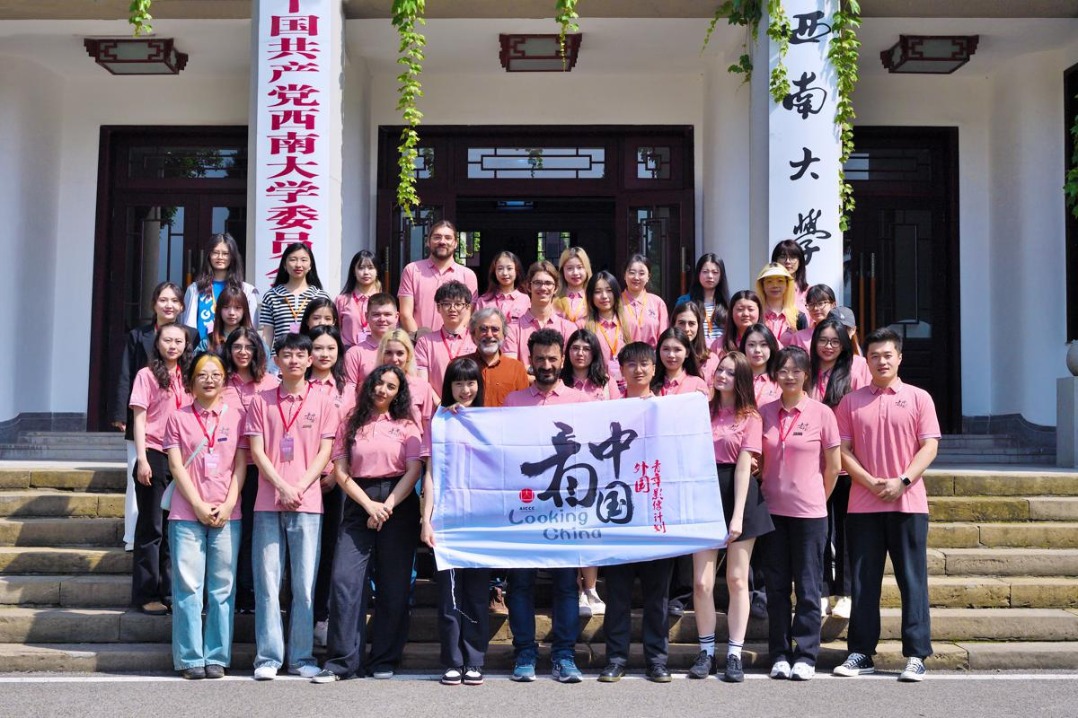Chinese scientists mull building 'cell factory' of blue-green algae

SHANGHAI -- Chinese scientists are considering building a biological "cell factory" of blue-green algae, in which air is the main raw material and the product is a range of organic compounds.
These cells of blue-green algae, also known as cyanobacteria, a kind of single-cell microorganism, have been modified using synthetic biotechnologies like gene editing. Featuring high reproduction speed and excellent efficiency of photosynthesis, they "eat" air and can produce organic compounds like glucose, sucrose, glycerol, resveratrol, and curcumin, among others.
Stepping into a laboratory at the School of Life Sciences and Biotechnology under the Shanghai Jiao Tong University, dense bottles and tubes with green liquid can be seen arranged in rows. They are filled with blue-green algae cells.
"Theoretically, this kind of algae has the potential to produce all the substances that plants can produce in nature," said Ni Jun, the lab owner and a researcher at the university.
For decades, cell factories using modified bacteria and yeast have been widely used in medicine, the chemical industry and agriculture, said Ni. Among other substances, they have been used to produce recombinant human insulin using Escherichia coli.
However, the high cost of raw materials, such as glucose, has limited the development of such cell factories to some extent. In pondering this problem, Ni wondered whether a solution might be found in using photosynthesis to produce compounds. He eventually opted for blue-green algae, which can express most plant-derived genes and can be easily modified due to its small genome size.
In 2015, for the first time, his team produced a series of high value-added natural products using engineered blue-green algae, shedding light on the promising prospects of light-driven biosynthesis.
The process of modifying these algae cells is not complicated. To produce a target compound, the first step is to analyze its synthesis process in plants, and then introduce each gene essential to this process into the algae cells. "Eventually, we regulate the expression level of each gene to improve its synthesis efficiency in blue-green algae cells as much as possible," Ni said. The findings were published in the international journal Green Chemistry in 2016.
As explained in the findings, the modification process can be simply summarized as using "scissors" to cut out relevant gene fragments in plants and inserting them into the gene sequence of cyanobacteria cells, which were thus given the ability to synthesize the target substances.
Ni has high hopes for the application of this technology in industrial production. He cites resveratrol, a common component in anti-aging skin care products, as an example. Resveratrol can be sourced from grapes and peanuts, but producing it using blue-green algae can shorten the production cycle by 240 times for each tonne of product, while reducing costs by 50 to 70 percent.
However, blue-green algae cannot produce every type of organic compound, nor can it produce some compounds more efficiently than other microorganisms. Ni has been exploring whether it was possible for this algae to work in combination with other organisms, with the former acting as an energy and organic carbon supplier, absorbing carbon dioxide in the air.
This ambitious idea turned into reality last year. His team made a breakthrough in combining cyanobacteria with various industrial bacteria. In that case, the former produces energy substances such as sugar for the latter, which further produces a wider variety of target products.
The study findings were published as a cover story in the renowned German academic journal Angewandte Chemie in January 2023. As the magazine illustrated, cyanobacteria and industrial bacteria were compared to two birds working in collaboration, one looking for tree branches outside and the other building their nest inside.
In Ni's lab, rows of glass bottles and tubes, surrounded by simulated sunlight, are shaken by machines to speed up the gas exchange inside. They are filled with green liquid of various shades, each representing a group of engineered blue-green algae cells capable of producing a different kind of target compound.
Through technology transfer, part of the team's research results have entered industrial production. At present, a production line with an annual capacity of 10 tonnes of high-value-added products is under construction, Ni said.
- Guangdong and Hong Kong universities sign agreement to cultivate talent
- 'A Thousand-Year Glance: Landscapes of Belt and Road countries in Thangka Paintings' exhibition held in Thailand
- China's top cyberspace regulator launches operation to combat illegal information
- Good quality water offshore reaches 85%
- Shenzhou XVIII completes in-orbit handover with Shenzhou XVII
- Serbian hooper finds second home in China




































